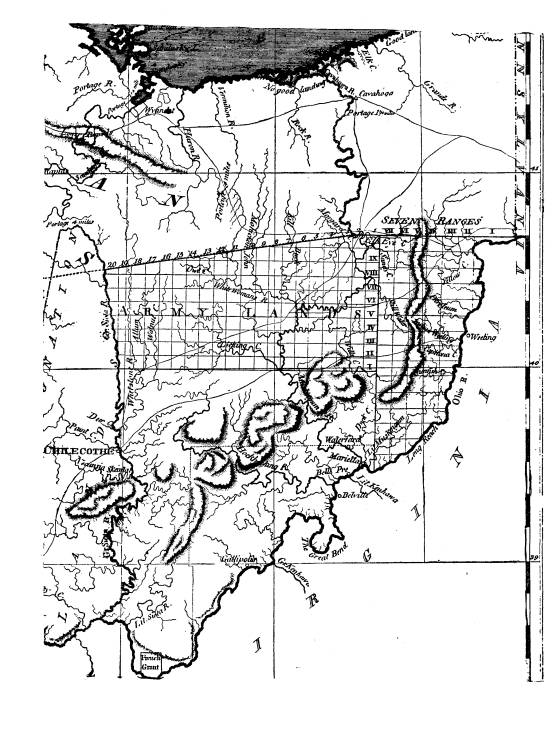Ohio History Journal
SURVEY OF THE SEVEN
RANGES.
After the immigration into the Western
Reserve of the ad-
vance columns of the Connecticut Land
Company, it was several
years before the survey of the new
Western Reserve Empire
was completed. The base lines of the
survey were the western
boundary of Pennsylvania, as determined
ten years before
(1786), and the parallel 41°
latitude north was now (1796) run
for the first time and extending west
from Pennsylvania 120
miles. From this base line, lines were
run north and south, five
miles apart, and later cross lines,
parallel to the base line, were
run, five miles apart, thus making
twenty-four townships across,
east and west, and twelve, north and
south, in the deepest place,
that is on the extreme east. Each
township was therefore twenty-
five miles square. The townships, east
and west, were numbered
as "ranges," and from the base
line north as "towns." Cleveland,
for instance, was in Range 12, from the Pennsylvania line, and
town 7 from the base line. The southern
line of the Reserve,
41° north latitude, is often
confused, by writers, including many
historians, with the Geographer's Line
which was 40° 38' 02°
latitude north, the gap between the two
lines being approximately
twenty-five miles, and according to
recent researches in govern-
ment archives by Mr. Albion M. Dyer,
Curator of the Western
Reserve Historical Society, the famous
Seven Ranges running
south from the Geographer's Line were
not extended north until
1800 and 1801, when, under the direction of
Rufus Putnam,
then surveyor general, they were
continued to the southern line
of the Western Reserve, thus adding four
townships to each
range. The Geographer's Line was
extended west to the Ninth
range, where it met the Indian boundary
line of the Greenville
Treaty, the line extending from Fort
Laurens through Loramie's
Station to Fort Recovery.
We accompany this description with a cut
made from a map
in possession of the Congressional
Library, Washington, D. C.
(466)
